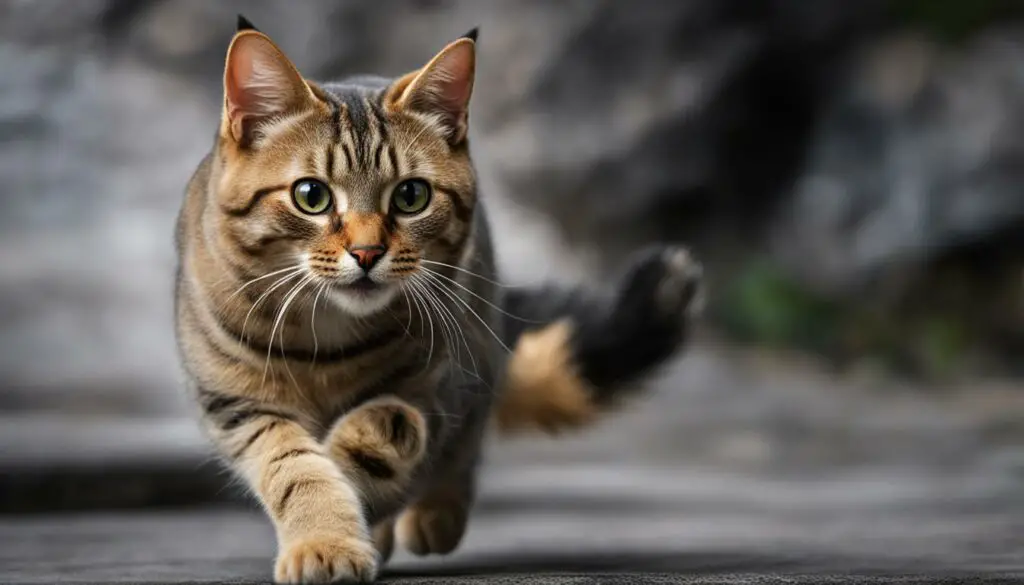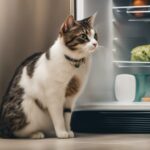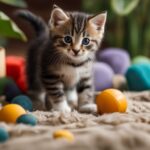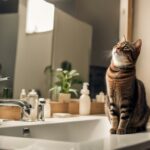Have you noticed that your cat has been meowing differently recently? As a cat owner, it’s important to understand the reasons behind your cat’s meowing and how to address their needs properly.
Cats use meowing as a way to communicate with humans, not with other cats. It’s their way of getting our attention and conveying their desires or discomfort. Whether it’s a greeting, a request for food or attention, or indicating a need to go in or out, your cat’s meowing is their way of expressing themselves.
Excessive meowing can sometimes indicate certain breeds being more prone to vocalization or underlying medical conditions. Understanding the underlying reasons behind your cat’s meowing can help you provide them with the appropriate care and attention they need.
Key Takeaways:
- Meowing is a way for cats to communicate with humans and express their needs and desires.
- Cats meow for various reasons, such as greeting, seeking attention or food, asking to go in or out, finding a mate, or indicating discomfort.
- Excessive meowing can be a sign of certain breeds being more vocal or underlying medical conditions.
- Understanding the underlying reasons behind your cat’s meowing is important to address their needs properly.
- Consulting with a veterinarian can provide additional guidance on managing excessive meowing.
Why Do Cats Meow?
Cats communicate through a variety of vocalizations, and meowing is one of the most common ways they express themselves. Understanding why cats meow differently can provide valuable insights into their behavior and needs. By deciphering their meows, we can better communicate with our feline friends and ensure their well-being.
Meowing is a learned behavior that kittens use to communicate with their mother, and it continues as a means of communication with humans throughout their lives. Cats meow for various reasons, including greeting their owners, seeking attention or food, asking to go outside or come inside, finding a mate, or indicating discomfort. Each meow carries a specific message, and by paying attention to the context and accompanying body language, we can interpret their meows more accurately.
Excessive meowing can be caused by different factors, such as certain breeds being more vocal, loneliness, health issues, or changes in their environment. Understanding the underlying cause is crucial in addressing the excessive meowing effectively. By keeping a log book to identify patterns and triggers, we can gain insights into the reasons behind their behavior and take appropriate actions to alleviate their distress.
| Interpreting Cat Meows | Understanding Cat Language | Cat Meowing Differently Causes |
|---|---|---|
| Learned behavior | Various reasons for meowing | Excessive vocalization |
| Communicating with humans | Attention-seeking | Breed tendencies |
| Communicating with mother | Hunger or discomfort | Loneliness and environment changes |
| Context and body language | Seeking to go in or out |
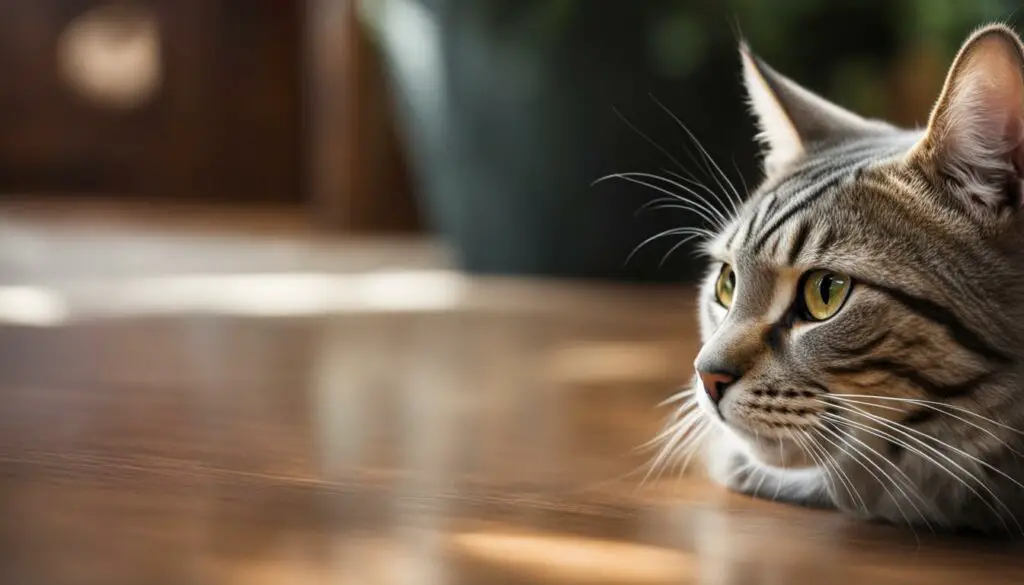
Common Reasons for Excessive Meowing
Excessive meowing can be a problem for some cat owners, causing frustration and concern. Understanding the underlying reasons for this behavior is crucial in order to address it effectively. Here are some common reasons why cats may meow excessively:
Loneliness
Cats are social animals and may meow excessively when they feel lonely or bored. Providing them with companionship and engaging in interactive play sessions can help alleviate their feelings of isolation.
Attention-Seeking
Cats may meow excessively to seek attention from their owners. They may want to be petted, played with, or simply acknowledged. It’s important to provide them with appropriate attention and affection to satisfy their need for interaction.
Hunger
Cats may meow loudly and persistently when they are hungry. It’s essential to establish a regular feeding schedule and resist the temptation to give in to their demands outside of those designated meal times.
Discomfort or Stress
Cats may meow excessively if they are experiencing discomfort or stress. This could be due to medical conditions, such as arthritis or urinary tract infections, or environmental factors, such as changes in their surroundings. It’s important to observe their behavior and consult with a veterinarian if necessary to address any underlying health issues or sources of stress.
Breed-Specific Vocalization
Some cat breeds, like Siamese cats, are known to be more vocal than others. These breeds have a tendency to meow more frequently and loudly. Understanding breed characteristics can help in managing and interpreting a cat’s meowing.
Table: Common Reasons for Excessive Meowing
| Reasons | Description |
|---|---|
| Loneliness | Cats may meow excessively when they feel lonely or bored. Providing companionship and playtime can help alleviate their feelings of isolation. |
| Attention-Seeking | Cats may meow excessively to seek attention from their owners. They may want to be petted, played with, or acknowledged. |
| Hunger | Cats may meow loudly and persistently when they are hungry. Establishing a regular feeding schedule is important. |
| Discomfort or Stress | Excessive meowing can be a sign of discomfort or stress. It is important to identify and address any underlying health issues or sources of anxiety. |
| Breed-Specific Vocalization | Some cat breeds, like Siamese cats, are known to be more vocal than others. Breed characteristics can influence a cat’s meowing tendencies. |
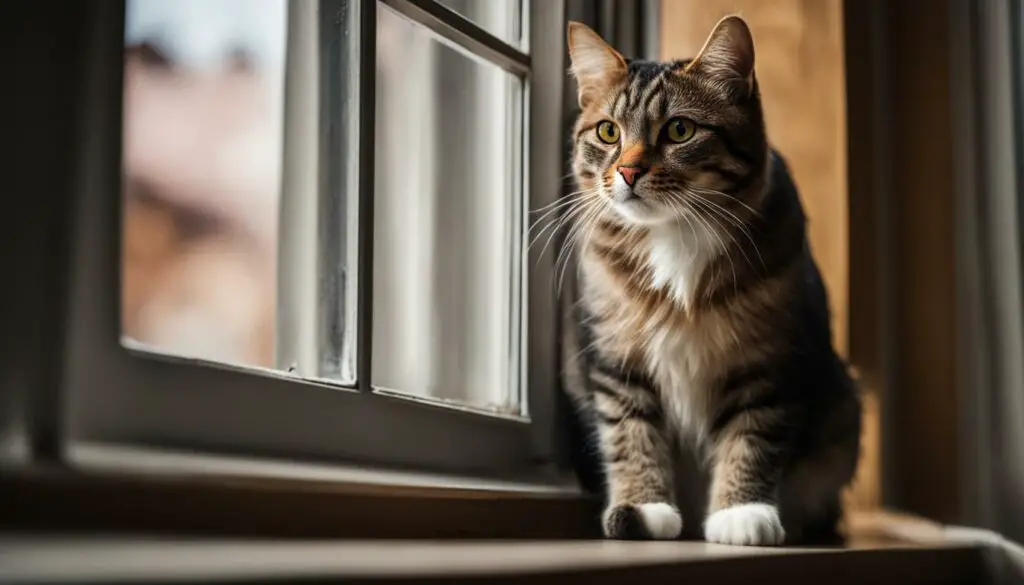
Cat Meowing for Attention
One common reason for excessive meowing in cats is their desire to seek attention from their owners. Cats are social animals and enjoy interacting with their human companions. They may use meowing as a way to engage their owners in activities such as petting, playing, or simply spending time together. When a cat meows for attention, it is important for owners to respond appropriately to reinforce desired behavior and prevent excessive meowing.
To address meowing for attention, it is recommended to ignore the meowing when it is attention-seeking behavior. This means not providing any form of attention or response until the cat is calm and quiet. This helps to discourage the cat from associating excessive meowing with getting attention. Once the cat has stopped meowing, it is important to reward them with attention, playtime, or any other form of positive interaction to reinforce the desired behavior.
“Ignoring the meowing when it is attention-seeking behavior and only rewarding the cat with attention when they are quiet can help decrease the excessive meowing.”
In some cases, it may be helpful to provide alternative sources of entertainment and stimulation for the cat, such as interactive toys or puzzle feeders. These can help keep the cat engaged and occupied, reducing the need for attention-seeking meowing. Additionally, ensuring that the cat’s physical and emotional needs are met, such as providing regular play sessions and environmental enrichment, can also help decrease excessive meowing for attention.
Conclusion
When a cat meows excessively for attention, it is important for owners to respond appropriately to address this behavior. Ignoring the meowing when it is attention-seeking behavior and rewarding the cat with attention when they are calm and quiet can help decrease excessive meowing. Providing alternative sources of entertainment and ensuring the cat’s physical and emotional needs are met can also aid in reducing attention-seeking meowing. By understanding and responding to a cat’s meowing for attention, owners can foster a stronger bond with their feline companion.
Meowing for Food
One common reason why cats meow is to express their desire for food. Cats are known for their strong food motivation, and meowing can be their way of communicating their hunger to their owners. When a cat meows for food, it can be quite persistent and even demanding, especially around mealtimes.
To manage this behavior, it’s important to establish a regular feeding schedule for your cat. Stick to consistent meal times and avoid feeding your cat outside of these designated times, even if they are meowing persistently. This helps teach your cat that meowing will not result in immediate access to food. Additionally, automatic feeders or leaving out dry food can be helpful in providing your cat with food without reinforcing their meowing.
It’s also important to ensure that your cat’s nutritional needs are being met with a balanced diet. Consult with your veterinarian to determine the appropriate portion sizes and types of food for your cat’s age, weight, and health needs.
| Meowing for Food | Management Tips |
|---|---|
| Cat meowing persistently for food |
|
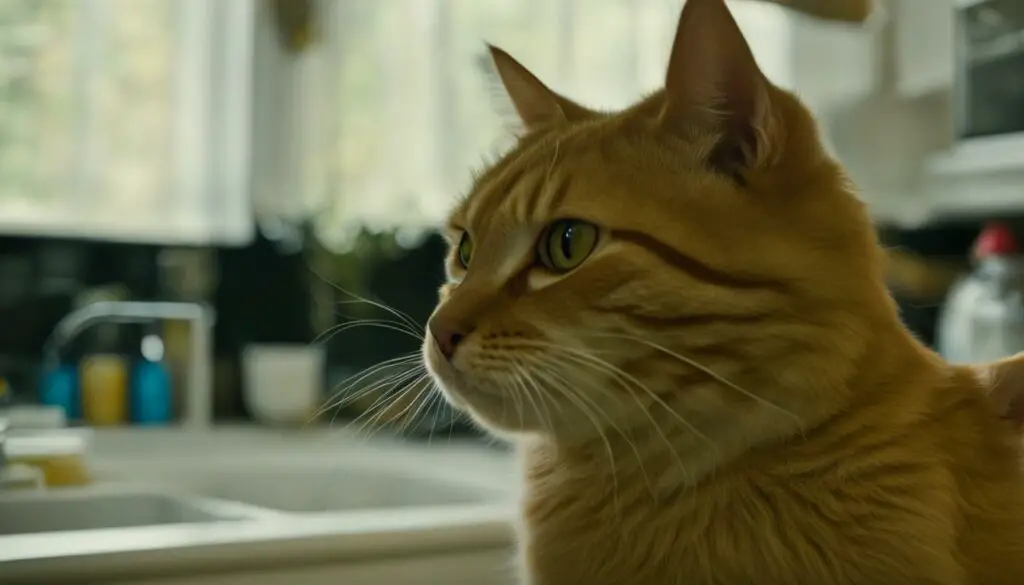
By implementing these strategies, you can help curb your cat’s meowing for food and establish a healthier mealtime routine. Remember that consistency is key, and it may take some time for your cat to adjust to the new feeding schedule. If you’re unsure about your cat’s nutritional needs or have concerns about their meowing behavior, consult with your veterinarian for personalized advice.
Meowing to Go In or Out
Cats may meow to indicate their desire to go outside or come inside. This is their primary way of communicating this need to their owners. Transitioning a cat from being indoor-outdoor to living exclusively indoors can result in excessive meowing at doors and windows as they adjust to this change. It may take time for the meowing to diminish, and installing a cat door or building an outdoor enclosure can provide them with a safe way to be outside.
When a cat meows to go in or out, it’s important to understand their needs and find solutions to meet them. Providing a designated outdoor space, such as an enclosed patio or catio, can allow your cat to enjoy the outdoors safely. This not only reduces excessive meowing but also prevents potential dangers like traffic accidents, fights with other animals, or exposure to diseases.
If you’re unable to create an outdoor space, consider providing environmental enrichment inside your home to keep your cat mentally stimulated. Interactive toys, scratching posts, and perches near windows can give your cat a sense of the outdoors and help reduce their longing to go outside. Additionally, establishing a consistent routine for playtime, feeding, and affection can help provide structure and alleviate any anxiety your cat may feel.
| Indoor Transition Tips: | Outdoor Enclosure Options: |
|---|---|
|
|
| Remember, each cat is unique, and it may take time to find the right solution for your furry friend. Observe their behavior, provide love and patience, and consult with a veterinarian or feline behaviorist for additional guidance. | |
Example of an Outdoor Enclosure:
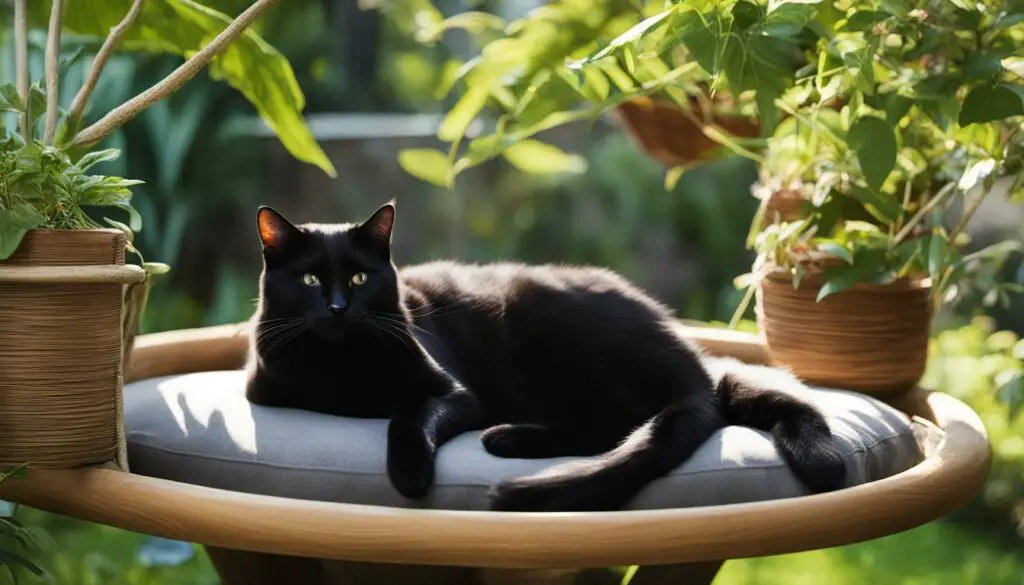
“Transitioning a cat to indoor-only living requires understanding and patience. By providing safe outdoor options or enriching their indoor environment, you can help your cat feel content and reduce excessive meowing.”
Elderly Cats: Meowing Due to Discomfort or Cognitive Dysfunction
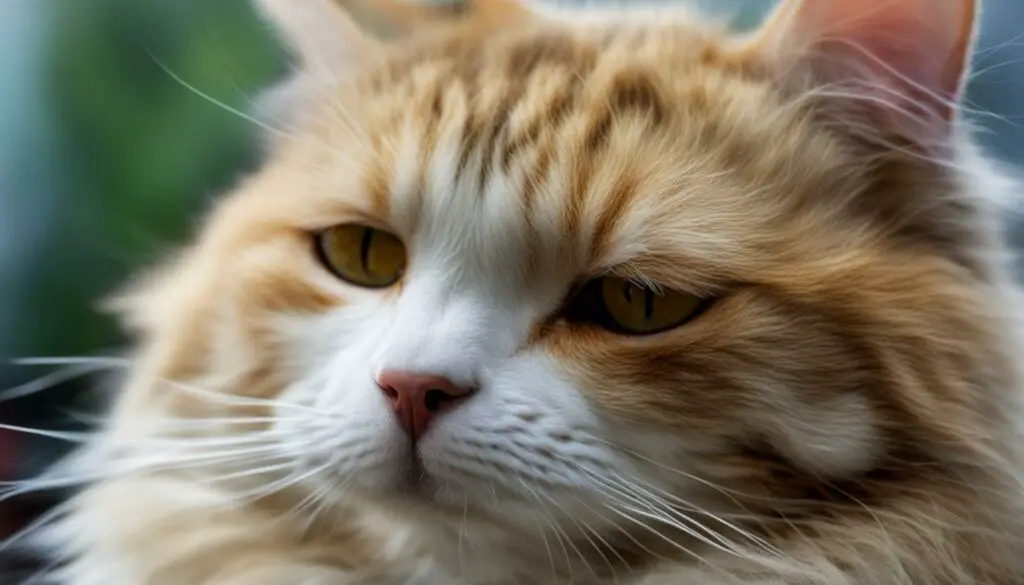
As cats age, they may experience discomfort or cognitive dysfunction that can lead to excessive meowing. It is important for pet owners to understand these potential causes and provide the necessary care and support for their elderly feline companions. When an elderly cat meows, it could be a sign of physical pain or discomfort, such as arthritis or dental issues. Regular veterinary check-ups are essential to identify and address any underlying medical conditions that may be contributing to their meowing.
In addition to physical discomfort, elderly cats may also develop cognitive dysfunction, which is similar to Alzheimer’s disease in humans. This condition can cause confusion and disorientation, leading to increased meowing. Creating a comfortable and predictable environment for elderly cats can help reduce their anxiety and improve their overall well-being. Providing soft bedding, easy access to litter boxes and food bowls, and minimizing environmental changes can help alleviate stress.
Aging cats require extra care and attention from their owners. Monitoring their behavior and observing any changes in meowing patterns can provide valuable insights into their health and well-being. Regular mental and physical stimulation, such as interactive play sessions and puzzle toys, can help keep their minds sharp and prevent cognitive decline. Additionally, providing a consistent routine and maintaining a calm and quiet environment can help minimize stress and ensure their comfort in their senior years.
Symptoms of Cognitive Dysfunction in Cats
“Cognitive dysfunction in cats can manifest in various ways. Some common symptoms include disorientation, confusion, increased meowing or yowling, altered sleep patterns, decreased response to familiar cues, and changes in appetite or litter box habits. If you notice any of these signs in your elderly cat, it is important to consult with a veterinarian to determine the best course of action.”
By understanding the potential causes of meowing in elderly cats and providing appropriate care and support, pet owners can ensure a better quality of life for their aging feline companions. Regular veterinary check-ups, creating a comfortable environment, and engaging in meaningful interactions can help address discomfort and cognitive dysfunction, reducing excessive meowing and promoting overall well-being.
Meowing to Find a Mate
During the breeding season, cats may engage in increased vocalization as they meow to find a mate. Both males and females use meowing as a way to communicate their availability and to attract potential partners. Female cats, in particular, may emit a distinct yowling sound to advertise their receptivity to males, while male cats may yowl to gain access to females. This vocal behavior is a natural instinct driven by the biological urge to reproduce.
It is important for cat owners to understand that this increased meowing during the breeding season is a normal part of feline behavior. However, if you have an intact cat and do not wish for them to reproduce, it is recommended to have them spayed or neutered. This not only helps control the pet population, but it also eliminates the hormonal drive for excessive meowing related to mating.
| Behavior | Description |
|---|---|
| Female Yowling | Distinct, loud vocalization to advertise receptivity |
| Male Yowling | Vocalization to gain access to females |
Understanding and recognizing the mating-related meowing of your cat can help you differentiate it from other forms of excessive vocalization. If your cat’s meowing persists outside of the breeding season or becomes excessive and distressing, it is recommended to consult with a veterinarian to rule out any underlying medical conditions that may be contributing to the behavior.
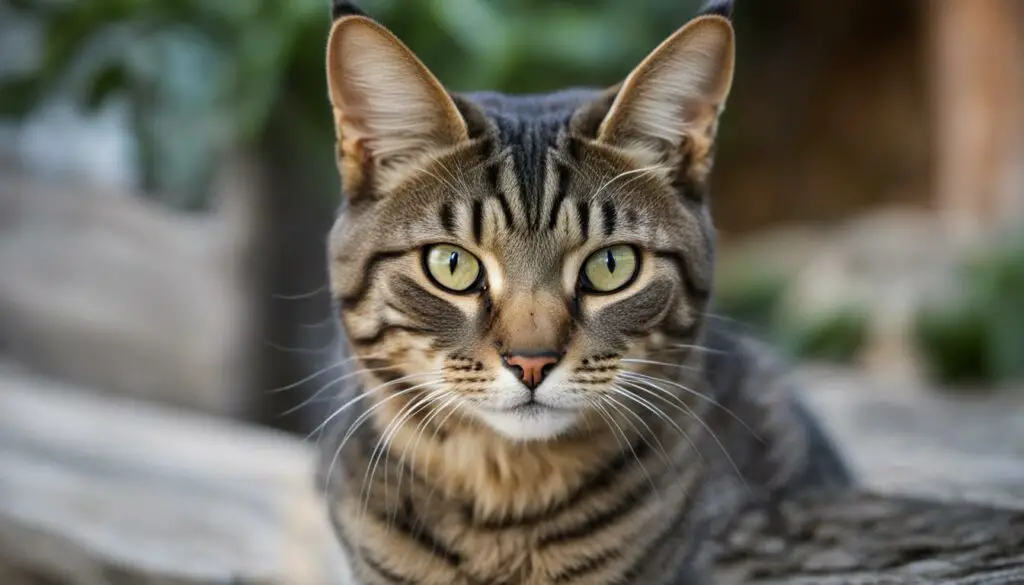
Tips for Managing Meowing During the Breeding Season:
- Consider spaying or neutering your cat to eliminate the hormonal drive for excessive meowing related to mating.
- Provide ample mental and physical stimulation to help redirect your cat’s energy.
- Ensure your cat has a safe and enriched environment that meets their needs.
- Consult with a veterinarian to rule out any medical conditions that may be contributing to excessive meowing.
When to Seek Veterinary Care
If your cat is meowing excessively, it is important to pay attention as it could be a sign of underlying medical conditions. Cats rely on vocalization to communicate various needs and emotions, but excessive meowing may indicate that something is amiss. If your cat’s meowing is accompanied by behaviors such as increased thirst, restlessness, irritability, or changes in appetite, it is essential to seek veterinary care.
Excessive meowing in cats can be caused by medical conditions such as overactive thyroid, kidney disease, or cognitive dysfunction. These conditions can lead to discomfort, confusion, or increased hunger, all of which may contribute to excessive vocalization. A thorough examination by a veterinarian can help identify any underlying health issues and determine the best course of action.
To ensure the well-being of your cat, it is important to stay vigilant and look for any changes in their behavior. If you notice excessive meowing or any other concerning symptoms, it is always best to consult with a veterinarian. They will be able to provide a proper diagnosis and recommend appropriate treatment options to address the underlying cause and alleviate your cat’s excessive meowing.
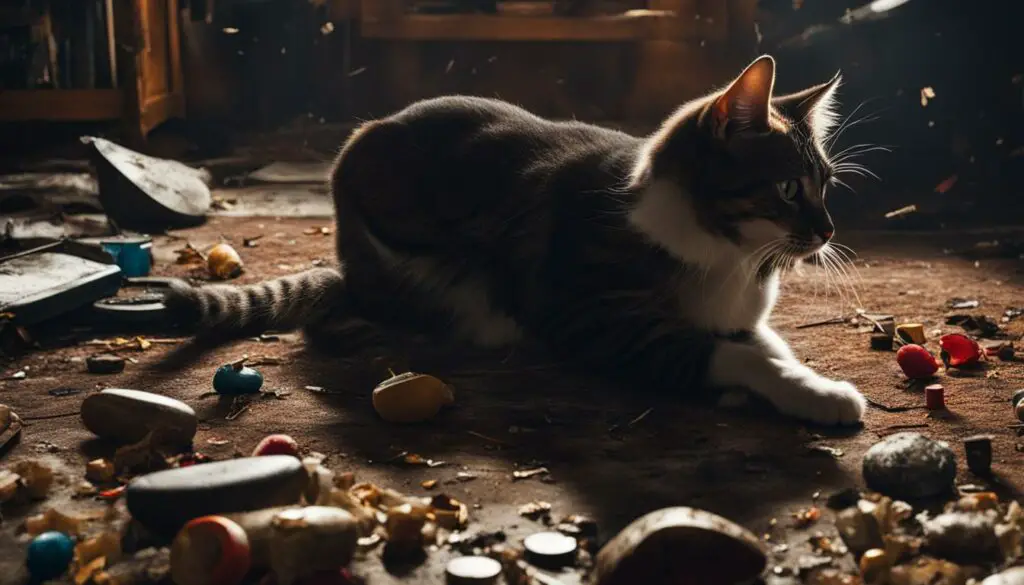
Table: Medical Conditions Causing Excessive Meowing
| Medical Condition | Symptoms |
|---|---|
| Overactive Thyroid | Increased appetite, weight loss, restlessness, excessive thirst |
| Kidney Disease | Increased thirst, frequent urination, weight loss, decreased appetite |
| Cognitive Dysfunction | Confusion, disorientation, increased meowing at night, changes in behavior |
Remember, excessive meowing in cats should not be ignored, especially if it is accompanied by other concerning symptoms. Veterinary care plays a crucial role in identifying and addressing the underlying medical conditions that may be causing your cat’s excessive vocalization. By seeking timely and appropriate care, you can help ensure your cat’s health and well-being.
Tips for Managing Excessive Meowing
Excessive meowing in cats can be a challenge for pet owners, but there are strategies that can help manage and reduce this behavior. By addressing the underlying cause and implementing appropriate techniques, you can create a more peaceful environment for both you and your feline friend.
Identifying the Cause
Before attempting to curb excessive meowing, it’s important to determine the underlying cause. Keeping a log book can help identify patterns and triggers for the behavior. If the meowing is attention-seeking, try to provide attention only when your cat is quiet. If it’s related to hunger, establish regular feeding times and avoid giving in to meowing outside of those times. Understanding the specific reason for the meowing will guide your approach to managing it.
Using Environmental Enrichment
One effective way to manage excessive meowing is to provide environmental enrichment for your cat. This can include providing interactive toys, scratching posts, and vertical spaces for climbing. Engaging your cat in playtime and mental stimulation activities can help redirect their attention and reduce the desire to meow for attention or out of boredom. Additionally, consider creating a safe outdoor space, such as a catio or supervised outdoor time, to satisfy their curiosity and need for exploration.
| Tip | Description |
|---|---|
| Regular playtime | Engage your cat in interactive play sessions to stimulate both their physical and mental needs. |
| Environmental enrichment | Provide toys, scratching posts, and vertical spaces to keep your cat mentally and physically engaged. |
| Safe outdoor space | Create a catio or offer supervised outdoor time to satisfy your cat’s curiosity and need for fresh air. |
Seeking Veterinary Guidance
If your cat’s excessive meowing persists or is accompanied by other concerning symptoms, it’s essential to consult with a veterinarian. Excessive meowing can sometimes be a symptom of an underlying medical condition such as hyperthyroidism, kidney disease, or cognitive dysfunction. Your veterinarian can perform a thorough examination and run any necessary tests to determine if there are any medical issues contributing to the behavior.
Remember, each cat is unique, and what works for one may not work for another. Be patient, consistent, and compassionate as you work to manage your cat’s excessive meowing. With time and understanding, you can create a harmonious environment for both you and your beloved feline companion.
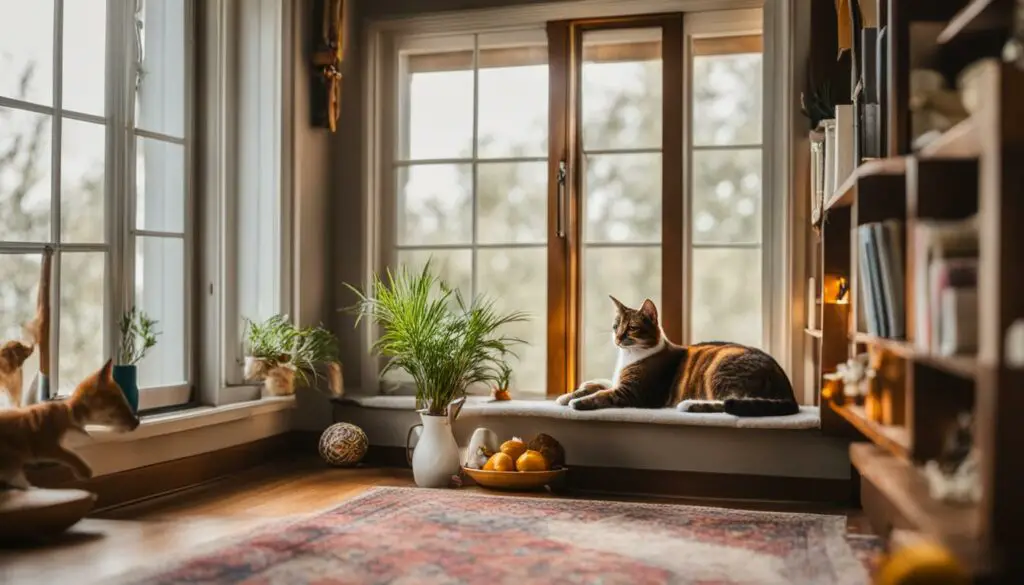
Breed Differences in Meowing
When it comes to meowing, different cat breeds have distinct tendencies. Some breeds are known to be more vocal and prone to excessive meowing compared to others. Understanding these breed differences can help cat owners better manage and interpret their feline companion’s vocalizations.
One breed that is often associated with excessive meowing is the Siamese cat. Siamese cats are known for their vocal nature and their ability to produce a wide range of unique sounds. They are highly social and enjoy interacting with their owners through meowing. Other Asian-origin breeds, such as the Burmese and Oriental Shorthair, also tend to be more talkative and expressive.
Shorthaired cats, in general, are often more vocal compared to longhaired breeds. This could be due to their outgoing and sociable nature. However, it’s important to note that individual cats within a breed can vary in their vocalization tendencies. Not all Siamese cats, for example, will be excessively vocal, and not all longhaired cats will be quiet.
| Breed | Vocalization Tendency |
|---|---|
| Siamese | High |
| Oriental Shorthair | High |
| Burmese | High |
| Maine Coon | Medium |
| Persian | Low |
“Siamese cats are notorious for their vocalizations, and if you enjoy having conversations with your cat, they may be the perfect breed for you.” – Cat enthusiast
While breed characteristics can provide insights into a cat’s likelihood of being vocal, it’s essential to remember that each cat is an individual with their own unique personality. Factors such as upbringing, environment, and socialization can also influence a cat’s meowing behavior. Therefore, it’s important to consider the specific cat’s behavior and not rely solely on breed stereotypes.
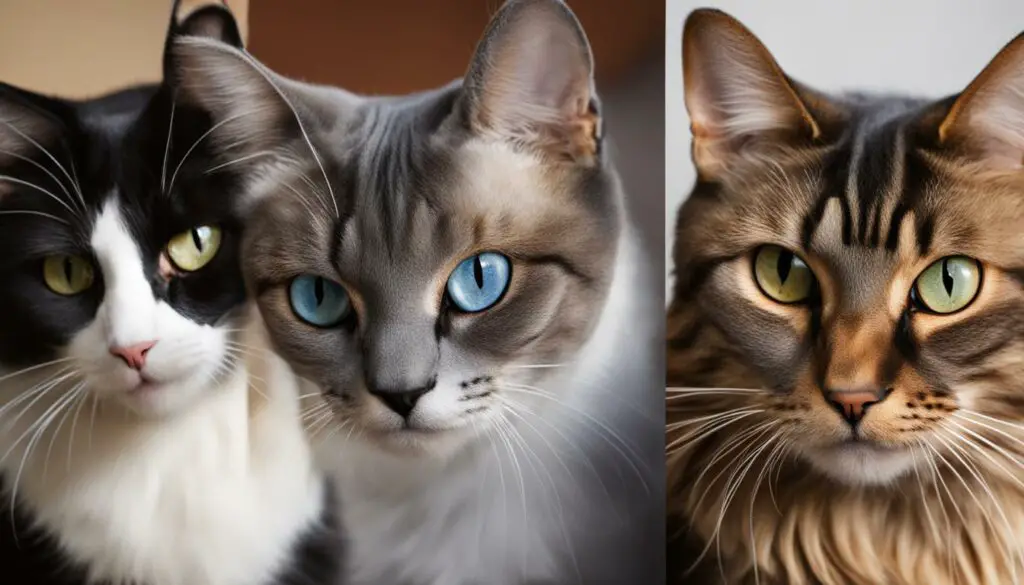
Decoding Cat Sounds
Understanding and interpreting a cat’s vocalizations is key to effective communication between cat owners and their feline companions. Cats use a variety of sounds to convey different messages and emotions. By deciphering these sounds, we can better understand what our cats are trying to communicate.
Meows are the most common vocalization used by cats. They can signify a range of things, such as greetings, attention-seeking, hunger, discomfort, or mating behavior. Each meow may have a slightly different tone or pitch, which can provide further insights into their meaning.
In addition to meows, cats also use other vocalizations. Purring is often associated with contentment, but it can also indicate agitation or stress in certain situations. Hisses and growls are defensive sounds that cats use to communicate fear, anger, or aggression. Chirps and trills are friendly sounds that cats use to greet their owners or other cats.
“Meows are the most common vocalization used by cats.”
| Vocalization | Meaning |
|---|---|
| Meow | Greetings, attention-seeking, hunger, discomfort, or mating behavior |
| Purr | Contentment or agitation/stress in certain situations |
| Hiss/Growl | Fear, anger, or aggression |
| Chirp/Trill | Friendly greetings |
It is important to pay attention to the context in which these sounds are made. An unusually loud or persistent meow could indicate that something is wrong, while a sudden change in a cat’s vocalization patterns may warrant a visit to the veterinarian. By listening and observing closely, we can enhance our understanding of our cats and strengthen the bond we share with them.
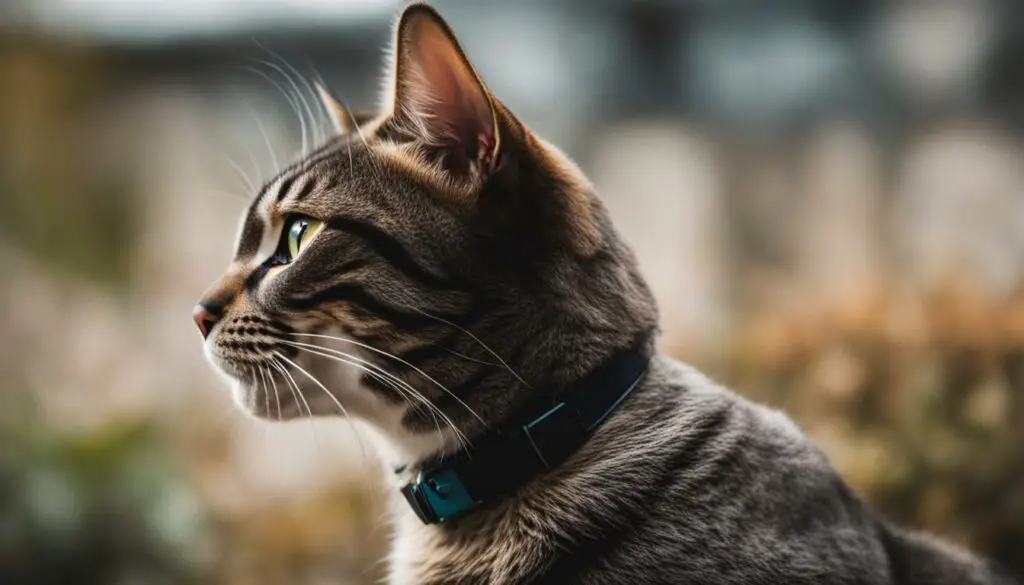
Summary:
- Cats use various vocalizations to communicate, with meows being the most common sound.
- Meows can convey greetings, attention-seeking, hunger, discomfort, or mating behavior.
- Purring is typically associated with contentment but can also indicate agitation or stress.
- Hisses and growls signify fear, anger, or aggression.
- Chirps and trills are friendly greetings.
- Understanding the context and patterns of a cat’s vocalizations can help us better understand their needs and emotions.
How to Respond to Meowing
When our cats meow, it’s their way of communicating with us. As responsible pet owners, it’s important to understand how to respond to their meowing appropriately. By addressing their needs and providing the right attention, we can nurture a stronger bond with our feline companions.
Understanding Different Meowing Patterns
Not all meowing is the same, and it’s crucial to decipher the meaning behind their vocalizations. Is the meowing a call for attention or a sign of distress? Is it a request for food or a desire to go outside? By paying attention to their body language and the context of their meowing, we can better understand their needs and respond accordingly.
For example, if your cat is meowing persistently by the door, they may be indicating their desire to go outside. In such cases, it’s important to evaluate if it’s safe for them to venture out. If it is, providing them with a secure outdoor space or a cat door can satisfy their need while keeping them safe.
Responding to Distressed Meowing
Some meowing can indicate distress or discomfort. If your cat’s meowing sounds different or intense, it may be a sign of a medical issue or feeling unsafe. In such cases, it’s essential to investigate further. Check if their litter box is clean, if they have enough food and water, or if they may be experiencing pain or discomfort. If you’re concerned, consult with a veterinarian to rule out any underlying health conditions. Their meowing may be their way of seeking help, and it’s important to respond promptly.
Providing the Right Attention
Cats meow to seek attention from their owners. While it’s important to acknowledge their needs, it’s also crucial to set boundaries. Responding to excessive meowing every time may reinforce the behavior, leading to even more meowing. Instead, wait for a moment of quiet and then provide attention and affection. By rewarding them when they’re calm, we can help reduce the frequency of excessive meowing.
Remember, cats, are unique individuals with distinct personalities. By observing and responding to their meowing in a thoughtful manner, we can create a harmonious environment and deepen our understanding of their needs.
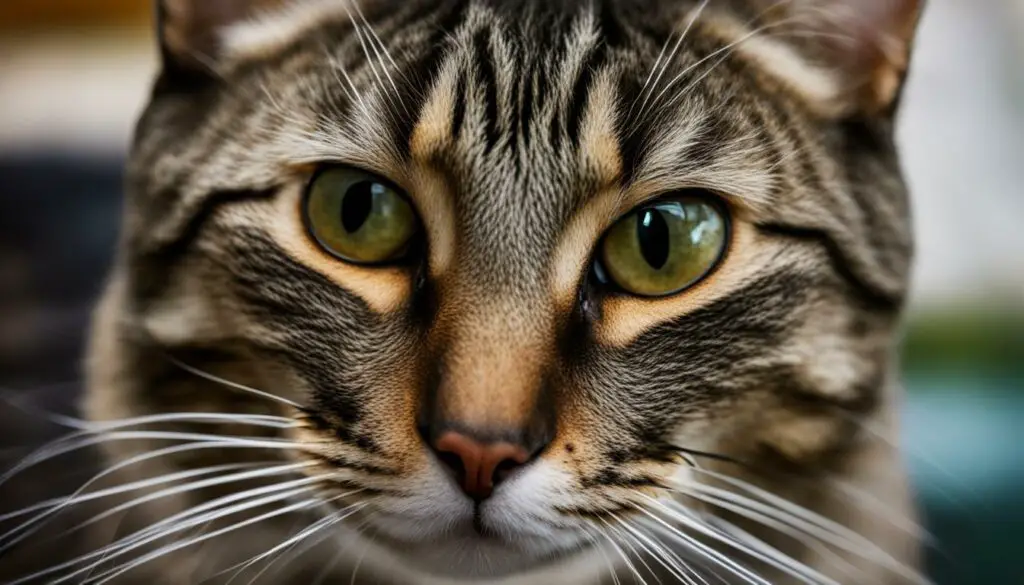
Conclusion
In conclusion, understanding why your cat is meowing differently is crucial in order to provide them with the proper care and attention they need. Cats use meowing as a way to communicate with humans, and it can serve various purposes like greeting, seeking attention, asking for food, or indicating discomfort. Excessive meowing can be a sign of certain breeds being more vocal or underlying medical conditions.
To address excessive meowing, it is important to identify the underlying cause. Keeping a log book can help you identify patterns and triggers for the excessive meowing. Different strategies can be employed based on the specific reason for the meowing, such as providing attention only when the cat is quiet, scheduling regular feeding times, or creating a safe outdoor space.
If you are concerned about your cat’s excessive meowing, it is always a good idea to consult with a veterinarian. They can provide guidance on managing the behavior and rule out any underlying medical conditions. By understanding and responding to your cat’s meowing, you can foster better communication and strengthen the bond between you and your feline companion.
FAQ
Why is my cat meowing differently?
Cats may meow differently for various reasons, such as seeking attention, expressing discomfort, indicating hunger, or finding a mate.
How can I interpret my cat’s meows?
Understanding your cat’s vocalizations can help you interpret their needs and emotions. Different meows can convey greetings, attention-seeking, hunger, discomfort, or mating behavior.
What are some common reasons for excessive meowing?
Excessive meowing can be caused by loneliness, seeking attention, hunger, discomfort, certain breed tendencies, or changes in the environment.
How can I manage excessive meowing for attention?
Ignoring the meowing when it is attention-seeking behavior and rewarding your cat with attention when they are quiet can help decrease excessive meowing for attention.
What should I do if my cat is meowing for food?
Establishing a regular feeding schedule, not giving in to meowing outside of meal times, and using automatic feeders or leaving out dry food can help curb excessive meowing for food.
How can I address excessive meowing to go in or out?
Providing a safe outdoor space, installing a cat door, or transitioning your cat to being indoor-only can help address excessive meowing to go in or out.
Why might an elderly cat meow excessively?
Elderly cats may meow excessively due to discomfort from conditions like arthritis, health issues, or cognitive dysfunction similar to Alzheimer’s disease.
Do cats meow to find a mate?
Reproductively intact cats, both males and females, may meow to find a mate. Female cats yowl to advertise their receptivity, while males yowl to gain access to females.
When should I seek veterinary care for excessive meowing?
Excessive meowing, especially when accompanied by other concerning symptoms, should prompt a visit to the veterinarian to rule out underlying medical conditions like overactive thyroid, kidney disease, or cognitive dysfunction.
What are some tips for managing excessive meowing?
Identifying the underlying cause, establishing routines, providing appropriate attention, playtime, and affection, and consulting with a veterinarian can help manage excessive meowing.
Are certain cat breeds more prone to excessive meowing?
Some breeds, such as Siamese and other Asian-origin breeds, are known for being more vocal. However, individual cats within a breed may vary in their vocalization tendencies.
How can I decode my cat’s sounds?
Cats communicate through a variety of vocalizations. Understanding and interpreting their sounds, such as meows, purrs, hisses, and growls, can enhance communication with your cat.
How should I respond to my cat’s meowing?
Responding appropriately to your cat’s meowing involves addressing their needs, ensuring their basic needs are met, and providing attention, playtime, and affection when appropriate.
Source Links
- https://www.aspca.org/pet-care/cat-care/common-cat-behavior-issues/meowing-and-yowling
- https://moderncat.com/articles/12-sounds-cats-make-and-what-they-mean/
- https://www.purina.co.uk/articles/cats/behaviour/understanding-cats/why-do-cats-meow

